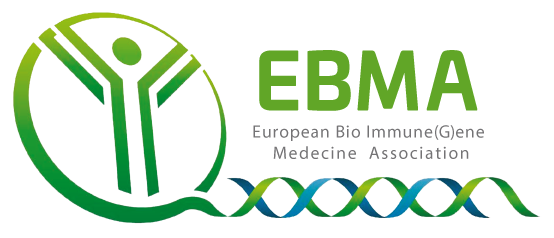Non-coding RNAs
RNA, derived from the transcription of DNA, which will not be translated into protein by ribosomes. In BI(G)MED, the 2 main non-coding RNAs used for regulatory purposes are micro-RNAs (miARNs) and long non-coding RNAs (lncARNs).
Molecular biology
A branch of biology that deals with the molecular processes of biological activity between and within cells, including the synthesis of molecules, their modification and their interaction mechanisms.
Biomimetism
Describes a process that seeks to imitate nature. BI(G)MED is biomimetic in that it uses molecules that naturally function within cells and attempts to re-establish their physiological functioning.
Immune system cells
1- myeloid lineage
Macrophages
Eosinophils
Neutrophils
Basophils
Dendritic cells
2- lymphoid lineage
B lymphocytes
NK cells
T lymphocytes
Epigenetics
A set of phenomena related to the modification of gene expression without the modification of the nucleotide sequence. The genes do not change, but are expressed, not expressed or differently expressed according to the environment. This is one of the fundamental aspects of the BI(G)MED therapeutic approach.
Genetics
Study of the transmission of biological heredity from one generation to the next by DNA.
Genomics
The study of the DNA sequences of living beings.
Hormesis
The law of inversion of action according to the dose/dilution used. This law explains a very significant portion of the therapeutic success of BI(G)MED, that is, the inversion of the effect in line with the dose, which allows for the use of the most varied immunogenetic molecules in line with the regulation goal (activation, modulation or inhibition).
Immunity
State of innate or acquired resistance exhibited by certain organisms against a disease or toxic element as well as attacks from infectious agents.
Innate immunity
Immediate immune response after contamination by an infectious agent. It is non-specific (same reaction whatever the type of pathogen) and does not induce immune memory.
Adaptive immunity
Immune response that comes into play after innate immunity. It is specific (adapts the response to the type of pathogen) and induces immune memory. It is comprised of cellular immunity through the activity of T lymphocytes and humoral immunity through that of B lymphocytes.
RNA interference
Biological process through which RNA molecules are involved in the specific suppression of the genetic expression sequence of double-stranded RNA, through translation or transcriptional repression.
lncRNAs (long non-coding RNAs)
Non-coding RNA which is large in size, with a more complex biological functioning that miRNAs.
miRNAs (microRNAs)
Small non-coding RNA with a post-transcriptional inhibitory role, often involving “genetic silencing”.
Nanobiotechnology
Nanotechnology involves the use of atoms and molecules as building blocks to manufacture materials and structures with new properties.
Nanobiotechnology is focused on biomolecules: nucleic acids, proteins, enzymes, hormones and antibodies.
Nanobiotechnology uses nanovectors which carry these molecules to their site of action, thus increasing their efficacy and eliminating side effects.
Nanomedicine
Application of nanotechnologies for medical purposes. In the context of BI(G)MED, the term “nanotechnologies” refers to the use of ultra-low doses.
Nanovector
Means of transport for molecular nanodoses towards the place where they are needed. In BI(G)MED, the nanovectors currently used are xylitol globules, which will be soon replaced by liposomes delivered in a spray format.
Transcription
Synthesis of a molecule of messenger RNA (mRNA) from the DNA sequence of a gene.
Translation
Manufacture of a protein based on the sequence of nucleotides of an mRNA molecule.
